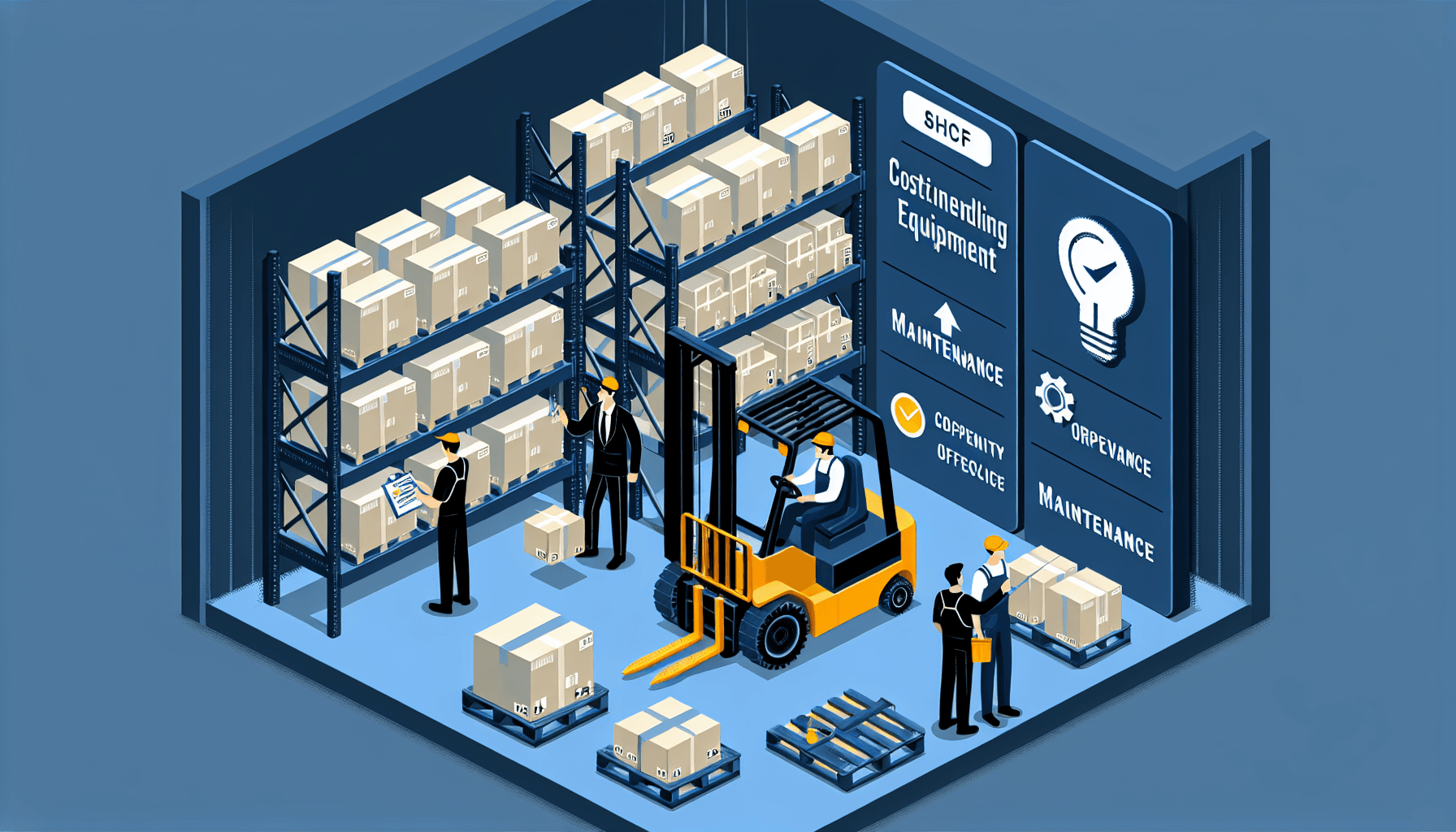Implementing a cost-effective maintenance program for material handling equipment (MHE) is essential for ensuring smooth warehouse operations and maximizing productivity. By regularly maintaining and servicing your MHE, you can prevent breakdowns, reduce downtime, and extend the lifespan of your equipment. In this article, we will provide you with a step-by-step guide on how to implement an effective and cost-efficient maintenance program for your MHE.
1. Create a Maintenance Schedule
The first step in implementing a maintenance program is to create a comprehensive maintenance schedule. This schedule should outline all the necessary maintenance tasks that need to be performed on your MHE, along with their frequency. It’s crucial to consider both manufacturer recommendations and your specific operational needs when creating the schedule.
For example, you may need to schedule regular inspections, lubrication, filter replacement, belt or chain adjustments, and battery maintenance for your MHE. By following a consistent maintenance schedule, you can ensure that all necessary tasks are completed on time and avoid any unplanned downtime due to equipment failure.
2. Assign Responsibility
Once you have created a maintenance schedule, the next step is to assign responsibility for each task. Your maintenance program should clearly define who is responsible for performing each maintenance task. This could be an in-house maintenance team, external service providers, or a combination of both.
To ensure accountability, it’s important to clearly communicate the responsibilities to the individuals or teams assigned to the tasks. Regularly review and update the maintenance responsibilities as needed to ensure everyone is aware of their roles and the importance of timely and accurate maintenance.
3. Document Maintenance Procedures
Documenting maintenance procedures is crucial for ensuring consistency and accuracy in your maintenance program. Create detailed step-by-step instructions for each maintenance task, including any safety precautions that need to be followed.
This documentation should be easily accessible by the team responsible for performing the maintenance tasks. It can be in the form of standard operating procedures (SOPs), checklists, or any other format that best suits your organization’s needs. Having clear and well-documented procedures helps reduce errors and ensures that maintenance tasks are performed correctly each time.
4. Train Your Maintenance Team
Proper training is essential for the success of your maintenance program. Invest in training programs for your maintenance team to equip them with the necessary skills and knowledge to perform their tasks effectively.
Training should cover topics such as equipment operation, maintenance techniques, troubleshooting common issues, and safety protocols. Providing regular training sessions and refresher courses will help keep your maintenance team up-to-date with the latest industry best practices and technologies.
HCO Innovations is a leading provider of warehouse optimization solutions, including material handling equipment management. They offer comprehensive MHE maintenance programs tailored to the specific needs of your organization. Their team of experts can help you implement an effective and cost-efficient maintenance program to keep your MHE running smoothly.
5. Regular Inspections and Audits
Regular inspections and audits are crucial for identifying potential issues and ensuring that the maintenance program is being followed effectively. These inspections should be conducted by experienced personnel who are trained to identify any signs of wear and tear, damage, or malfunction in your MHE.
During inspections, make sure to check for loose or broken parts, leaks, abnormal noise, and any other indicators of potential problems. Conducting audits on a regular basis will help you assess the effectiveness of your maintenance program and identify areas for improvement.
6. Data Analysis and Continuous Improvement
Collecting and analyzing data related to MHE maintenance is essential for implementing continuous improvement strategies. Use maintenance management software or other tools to track and analyze data such as equipment downtime, maintenance costs, and performance metrics.
Identify trends and patterns in the data to identify areas where you can optimize your maintenance program. This could include adjusting the maintenance schedule, optimizing spare parts inventory, or implementing predictive maintenance strategies.
The ultimate goal of data analysis is to proactively manage your MHE maintenance to prevent breakdowns and optimize overall equipment performance and lifespan.
In Conclusion
Implementing a cost-effective MHE maintenance program is vital for efficient warehouse operations and maximizing productivity. By following the steps outlined in this article, you can establish a comprehensive and well-structured maintenance program for your MHE.
Remember, regular maintenance, proper training, and continuous improvement are the keys to ensuring the longevity and optimal performance of your material handling equipment.
HCO Innovations can provide you with expert guidance and support in implementing a cost-effective MHE maintenance program. Their warehouse optimization solutions are designed to enhance safety, productivity, efficiency, and cost-effectiveness within warehouse operations.

